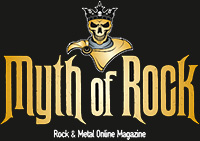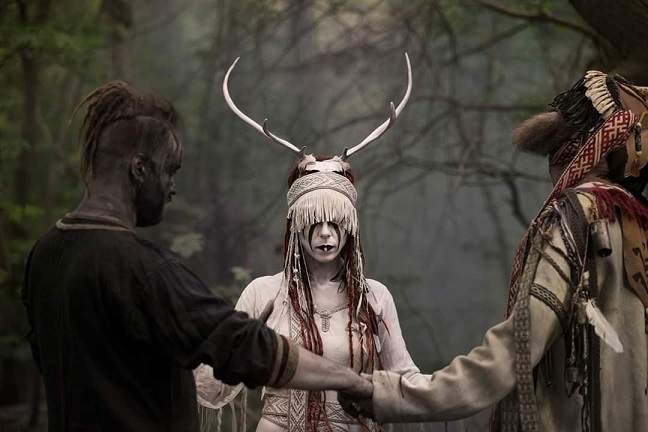Heilung, meaning “healing” in German, is a unique and experimental collective that transcends the boundaries of contemporary music. Formed in 2014 by vocalist Kai Uwe Faust, producer Christopher Juul and Norwegian singer Maria Franz, Heilung blends dark folk, neo-pagan and ancient tribal sounds into a sonic tapestry unlike anything else in the music world. They describe their music as “amplified history” and rightfully so, as their work breathes new life into ancient cultures, rituals and the mysticism of long-forgotten times. Drawing from prehistoric times, Heilung’s music explores the primal elements of humanity, evoking the deep spiritual and physical connection between people and nature. In this retrospective, we explore the band’s journey, its music, the live performances that have become almost sacred events and the lasting legacy that Heilung is creating, just a few days before the band’s live show at Lycabettus Theatre on the 12th October 2024.
by Dimitris Zacharopoulos
Heilung was born out of a shared passion for ancient European history, folklore and forgotten rituals. Kai Uwe Faust and Christopher Juul, a Danish music producer with a keen interest in historical music, combined their knowledge to create an entirely new form of musical expression. The duo was soon joined by Maria Franz, Juul’s longtime girlfriend and a singer in progressive rock/pop-rock band Euzen.
From its inception, Heilung was designed to be more than just a musical project. It was envisioned as a bridge to the past, using historical instruments, ancient texts and forgotten chants to evoke the pre-Christian spiritualism of northern Europe. The group incorporates a variety of ancient languages, including Old Norse, Proto-Germanic and Gothic, further enhancing their historical authenticity.
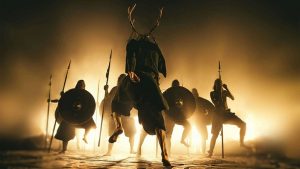
Discographic Rituals
Each Heilung album feels like an archaeological dig into a time before modern civilization, where humanity’s spiritual practices were closely intertwined with nature and the universe.
- “Ofnir” (2015, self-released, re-issued by Season of Mist)
Their debut album, “Ofnir”, is an intense journey into ancient Nordic tribalism. It features everything from primal chants to the sounds of bones, stones and traditional instruments. The album’s atmospheric nature conjures up visions of ancient ceremonies, and tracks like “Krigsgaldr” and “Alfadhirhaiti” exemplify this aesthetic. This first album provides the listener with a deeply immersive experience, focusing on the tribal and martial aspects of early European cultures.
- “Lifa” (2017, Season of Mist)
It is a live album that captures Heilung’s mesmerizing and theatrical performances. Recorded during a performance at Castlefest, this album showcases the group’s ability to transform the stage into an ancient, ritualistic altar. The haunting live versions of songs like “In Maidjan” and “Othan” emphasize the band’s primal and communal energy, which is often described as transcendent.
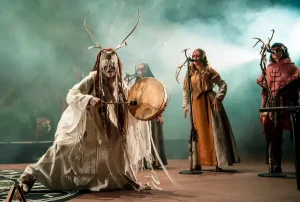
- “Futha” (2019, Season of Mist)
With its sophomore album, Heilung took a more feminine, life-affirming direction. Where “Ofnir” dealt largely with masculine and warlike energies, “Futha” embraced fertility, creation, and the cycle of life. Songs like “Norupo” and “Traust” continue Heilung’s exploration of ancient mysticism but with a softer and more nurturing tone. The album’s title references the rune “futhark,” a symbol for fertility, further underscoring its thematic elements.
- “Drif” (2022, Season of Mist)
Heilung’s most recent studio album is a continuation of their exploration of ancient cultures but with a wider focus that transcends purely Nordic influences. Here, the band delves into ancient history from across Europe, incorporating influences from Celtic, Slavic and even Southern European cultures. Tracks like “Anoana” and “Tenet” expand on the band’s thematic breadth, while maintaining their core ethos of reawakening the past through sound.
Some essential tracks
- “Krigsgaldr” – A hypnotic war chant that has become one of Heilung’s signature songs. Its pulsating rhythm and warrior cries transport the listener to the battlefield of a time long gone.
- “Alfadhirhaiti” – An invocation to the gods, “Alfadhirhaiti” showcases Heilung’s mastery of ritualistic chanting and deep, guttural vocals that connect to the earth.
- “Norupo” – Based on the words of the Norwegian Rune Poem, this track encapsulates the spiritual dimension of Heilung’s music, using ancient runes as a lyrical source.
- “Hamrer Hippyer” – An intense and shamanistic track that epitomizes Heilung’s ability to create a trance-like experience, blending vocals, percussion and traditional instruments to evoke ancient rituals.
- “Traust” – One of the more melodic tracks in their repertoire, it balances powerful chants with soothing harmonics, giving a glimpse into Heilung’s softer side.
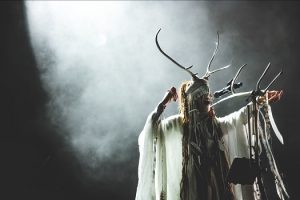
The live shows
Heilung’s live performances are phenomenal, often described as a mix between a spiritual ceremony and a theatrical event. Their concerts are immersive, with band members dressed in ritualistic attire, including animal hides, bones and antlers. The stage is transformed into a sacred space where ancient gods and ancestors are invoked through music, chanting and dramatic movements. The audience is not just watching a performance but is often drawn into the ritual themselves. Weapons, shields and historical costumes are used to recreate the atmosphere of ancient Nordic and Germanic rituals. Dancers perform as warriors, shamans, and priestesses, reinforcing the visual and auditory intensity of the experience. Concerts like their famous Castlefest performance have become the stuff of legend, with fans describing the experience as transformative and otherworldly.
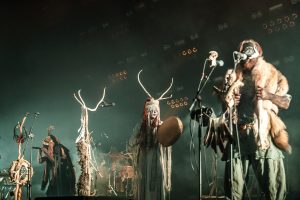
Influences: A Deep Connection to the Past
Heilung’s primary influence is, of course, the ancient past. Their music draws from historical sources such as Norse sagas, rune inscriptions and shamanistic traditions. However, the band’s interest goes beyond just Nordic history; they have incorporated elements from Bronze Age Europe, ancient Celtic and Germanic tribes and even Paleolithic spiritual practices. The band has also stated that their music is heavily influenced by nature itself. The sounds of wind, water and wildlife are integral to their compositions, reflecting humanity’s deep connection to the natural world before industrialization and modernity took hold.
Paving the way for a new kind of folk
Heilung is often credited with helping to rejuvenate the neo-folk and pagan folk genres, which had existed in smaller subcultures but never gained widespread recognition until their rise. Their dedication to historical authenticity, combined with the emotional intensity of their performances, has set them apart as true innovators. Their success has also opened the door for other artists to explore similar themes, blending ancient traditions with modern technology. In doing so, Heilung has created a genre unto itself—one that resists easy categorization, but continues to resonate with those seeking a deeper connection to their roots and the mysteries of the past.
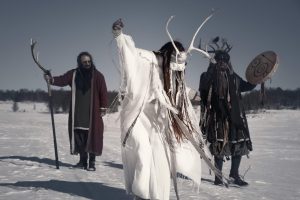
Trivia
- Kai Uwe Faust is a trained tattoo artist, specializing in traditional Nordic and blackwork tattoos. His deep knowledge of historical symbolism greatly influences Heilung’s aesthetic.
- The group meticulously researches the historical accuracy of their music, including the instruments they use. They have been known to perform with reconstructed Bronze Age lyres, frame drums and other ancient tools.
- The band does not consider itself political in any way, choosing instead to focus purely on the spiritual and historical aspects of humanity.
- Their motto, often repeated in interviews, is “Remember, we are all brothers. All people, beasts, trees, and stone and wind. We all descend from the one great being”.
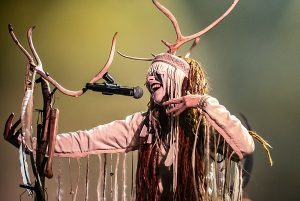
Heilung’s music is a gateway to the distant past, a revival of forgotten sounds and stories that evoke a primal, ancient energy. Their ritualistic performances, grounded in historical authenticity, have turned them into more than just a band—they are cultural messengers, connecting modern listeners to their ancestors’ worldviews. As Heilung continues to explore deeper into the forgotten corners of history, they leave behind not only a growing discography but also a spiritual legacy that is healing and transformative.
Heilung’s work stands as a reminder that some things, no matter how ancient, are eternal.
